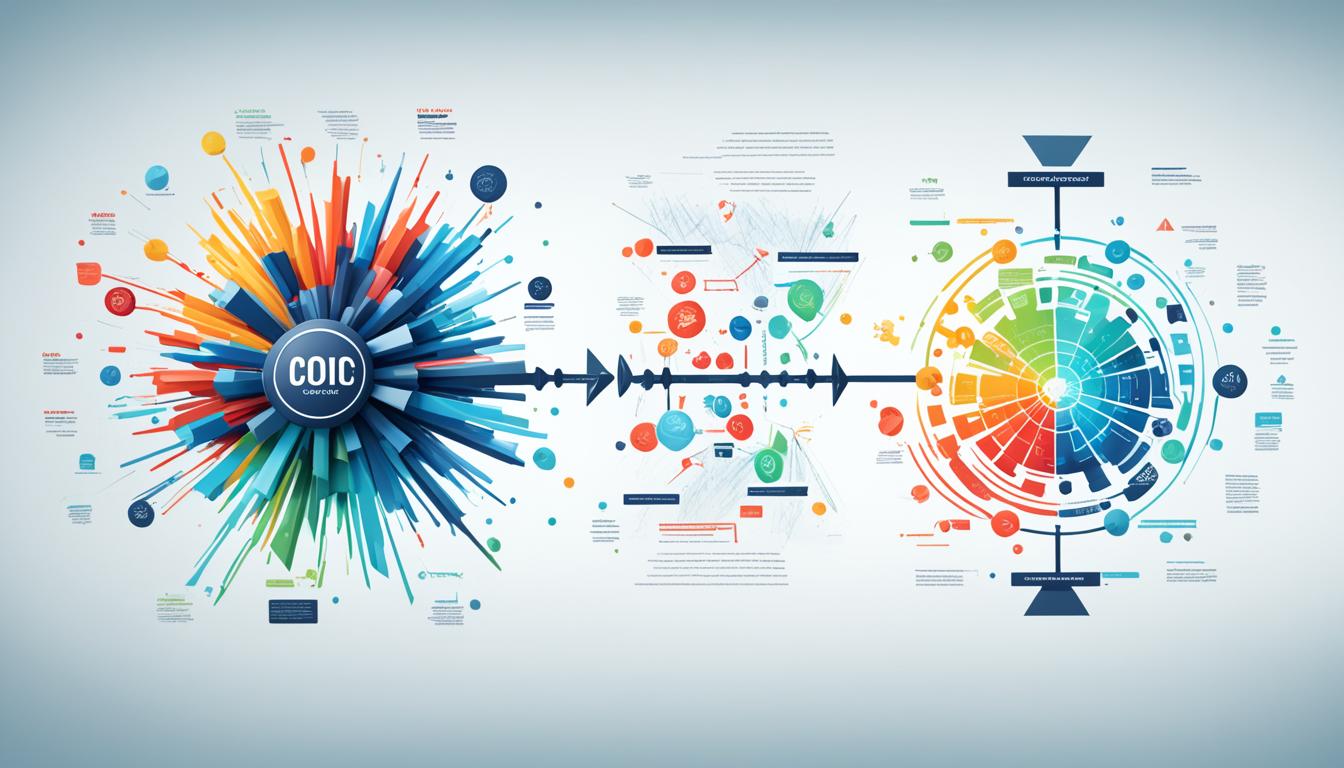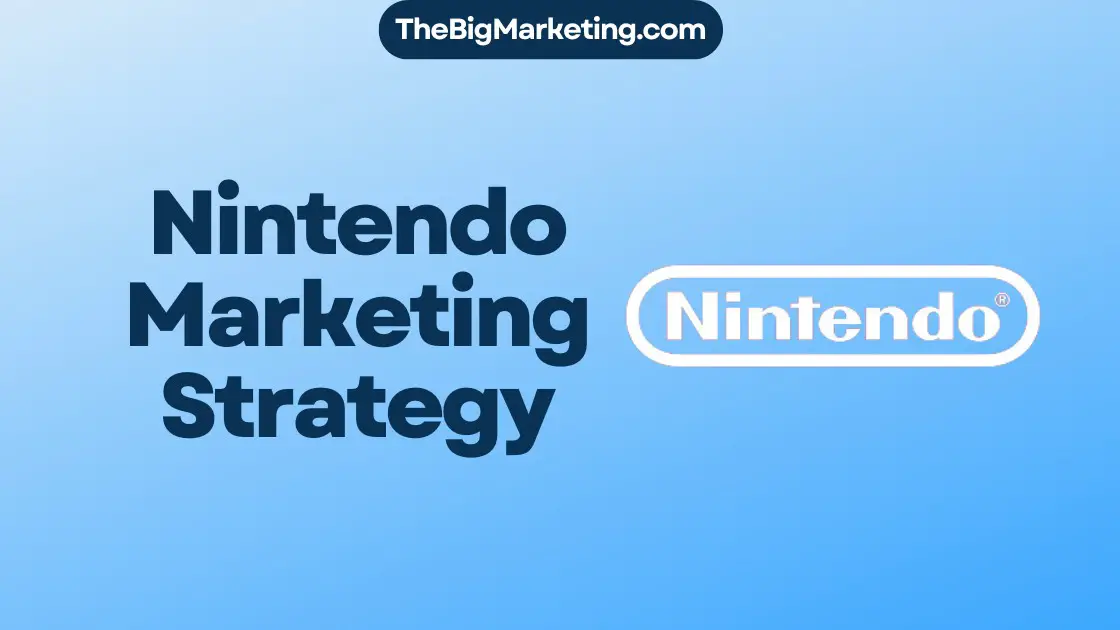When it comes to B2B marketing, understanding the differences between customer marketing and product marketing is crucial. These two strategies have distinct focuses and objectives, each playing a vital role in driving business growth. In this comprehensive guide, we will explore the disparities between customer marketing and product marketing, delve into their respective strategies, and uncover how companies can effectively combine these approaches to create personalized and impactful marketing campaigns.
Key Takeaways:
- Customer marketing aims to improve customer retention, reduce churn, and boost loyalty and advocacy.
- Product marketing focuses on promoting specific products and fulfilling customer needs.
- The main difference lies in their focus – customer marketing is customer-centric, while product marketing is product-focused.
- Customer marketing strategies involve building strong relationships, improving retention, and fostering community participation.
- Product marketing strategies focus on understanding the target audience, strategic positioning, and messaging to drive demand and revenue.
What is Customer Marketing?
Customer marketing is a strategic approach that focuses on leveraging the experiences of existing customers to improve retention and drive growth. Unlike product marketing, which is centered around promoting specific products, customer marketing prioritizes building strong relationships with customers, enhancing customer retention, and fostering community participation.
One of the key elements of customer marketing is customer segmentation, which involves categorizing customers into different groups based on their characteristics, needs, and behaviors. By segmenting customers, companies can tailor their marketing efforts and create personalized experiences that resonate with each customer segment.
Customer marketing aims to create a loyal customer base by prioritizing customer satisfaction and engagement. By focusing on building relationships with existing customers, companies can increase customer retention rates, encourage repeat purchases, and foster brand advocacy. This not only leads to higher customer satisfaction but also helps drive revenue growth.
Engagement methods, such as personalized email campaigns, loyalty programs, and targeted content creation, are essential components of customer marketing strategies. These tactics allow companies to connect with customers on a deeper level, deliver relevant messages, and enhance the overall customer experience.
What is Product Marketing?
Product marketing is a strategic process that revolves around bringing a product to market, promoting it effectively, and ultimately driving sales. It plays a pivotal role in understanding the target audience, positioning the product strategically, and crafting compelling messaging to generate demand and boost revenue. Product marketers work tirelessly to ensure that the product meets the needs and desires of the target audience and is positioned appropriately in the competitive market.
To effectively execute product marketing, meticulous planning and research are essential. By conducting market research and competitor analysis, product marketers gain valuable insights into customer preferences, market trends, and the competitive landscape. This information allows them to position the product in a way that resonates with the target audience and differentiates it from competitors.
Strategic positioning is a critical aspect of product marketing. It involves identifying the unique selling propositions (USPs) and key features of the product and emphasizing them in the messaging to highlight its value. By clearly articulating the benefits and advantages, product marketers create a compelling case for customers to choose their product over others in the market.
Messaging is another key element of product marketing. Crafting persuasive and engaging messages that address customer pain points, articulate the value proposition, and connect emotionally with the audience significantly influences customer perception and buying decisions. Effective messaging not only attracts customers but also establishes a strong brand identity and builds trust and credibility.
Product marketing aims to drive demand and create a sense of urgency among potential buyers. By showcasing the unique benefits and advantages, creating a desire for the product, and addressing customer needs effectively, product marketers can generate excitement and demand. This, in turn, leads to increased sales, market share, and overall business growth.
Some of the core activities of product marketing include:
- Defining target market segments and customer personas
- Conducting market research and competitor analysis
- Developing strategic positioning and messaging
- Creating compelling product collateral and marketing materials
- Launching promotional campaigns
- Collaborating with cross-functional teams to ensure product success
By effectively implementing product marketing strategies, companies can maximize the potential of their products, reach the right audience, and achieve substantial growth. The combination of strategic positioning, compelling messaging, and targeted marketing efforts not only fulfills customer needs but also creates a strong demand for the product in the market.
| Benefits of Product Marketing |
|---|
| Boosts revenue through effective promotion and sales |
| Creates strong demand for the product |
| Positions the product strategically to stand out in the market |
| Maximizes the potential of the product through targeted marketing |
Key Differences Between Customer Marketing and Product Marketing
When it comes to marketing strategies, understanding the key differences between customer marketing and product marketing is crucial for success. Both approaches play important roles in B2B marketing, but they have distinct focuses and objectives.
Customer-Focused Approach
Customer marketing takes a customer-centric approach, placing the customer at the center of all marketing efforts. It involves leveraging customer insights and experiences to drive retention, advocacy, and loyalty. This approach requires a deep understanding of customer preferences, needs, and behaviors in order to develop personalized and targeted marketing campaigns.
Product-Focused Approach
In contrast, product marketing takes a product-focused approach, prioritizing the promotion and positioning of specific products in the market. The goal of product marketing is to fulfill customer needs by effectively communicating the value proposition, features, and benefits of a product. This approach involves conducting market research, competitive analysis, and crafting compelling messaging to generate demand and drive sales.
Table: Comparison Between Customer Marketing and Product Marketing
| Customer Marketing | Product Marketing |
|---|---|
| Takes a customer-centric approach. | Takes a product-focused approach. |
| Focuses on leveraging customer insights and experiences. | Focuses on promoting specific products and fulfilling customer needs. |
| Drives customer retention, advocacy, and loyalty. | Generates demand and drives sales. |
In conclusion, while customer marketing and product marketing have different focuses, both are vital for a successful B2B marketing strategy. By understanding the key differences, businesses can leverage both approaches in a complementary manner to effectively engage customers, foster loyalty, and drive revenue.
Benefits of Customer Marketing
Customer marketing offers numerous benefits that can significantly impact a company’s success. By implementing effective customer marketing strategies, businesses can tap into the greater propensity of customers to buy new products, gain a deeper understanding of customer preferences and needs, improve customer retention rates, and increase customer advocacy.
One of the primary advantages of customer marketing is the ability to tap into the existing customer base. By focusing on nurturing relationships with current customers, companies can cultivate a sense of loyalty and trust, resulting in a higher likelihood of repeat purchases and customer satisfaction.
Through customer marketing efforts, businesses can also gain invaluable insights into customer preferences and needs. By analyzing customer data and feedback, companies can develop a comprehensive understanding of their target audience, allowing them to tailor marketing strategies and offerings to align with customer expectations.
A strong customer marketing strategy can significantly improve customer retention rates. By providing personalized experiences and valuable engagement, businesses can enhance customer satisfaction, reduce churn, and foster long-term loyalty. Satisfied customers are more likely to remain loyal to a brand, repeat their purchases, and even become brand advocates, attracting new customers through positive word-of-mouth marketing.
Customer advocacy is a significant benefit of customer marketing as well. Delighted and engaged customers are more inclined to share their positive experiences with friends, family, and colleagues, thereby amplifying the reach and impact of a company’s marketing efforts. This powerful form of advocacy can drive organic growth, increase brand awareness, and attract new customers.
To illustrate the impact of customer marketing, the table below provides a summary of the key benefits:
| Benefits of Customer Marketing |
|---|
| Greater propensity for customers to buy new products |
| Deeper understanding of customer preferences and needs |
| Improved customer retention rates |
| Increased customer advocacy |
By leveraging the benefits of customer marketing, businesses can strengthen their customer relationships, drive revenue growth, and position themselves as customer-centric brands in their respective markets. Putting the customer at the forefront of marketing strategies is a proven path to success in today’s competitive business landscape.
Benefits of Product Marketing
Product marketing is an essential component of any successful marketing strategy. By effectively promoting and selling a product, product marketing brings several benefits to businesses, driving demand, boosting revenue, and positioning the product in the market.
One of the primary benefits of product marketing is its ability to drive demand. Through comprehensive market research and understanding the target audience, product marketers can create compelling messaging and positioning that resonates with potential customers. By highlighting the unique features and benefits of the product, product marketing generates interest and desire among consumers, ultimately driving demand.
Furthermore, product marketing plays a pivotal role in boosting revenue. By effectively promoting and selling the product, product marketers can significantly contribute to the company’s bottom line. Through strategic pricing, targeted marketing campaigns, and persuasive messaging, product marketing ensures that the product reaches its target audience and generates sales.
Another advantage of product marketing is its ability to position the product appropriately in the market. By understanding the competitive landscape, target audience needs, and market trends, product marketers can position the product as a desirable solution that meets customer requirements. Effective positioning ensures that the product stands out from competitors and resonates with the target market, resulting in increased market share and customer acquisition.
To illustrate the benefits of product marketing, consider the following table:
| Benefits of Product Marketing |
|---|
| Driving demand for the product |
| Boosting revenue through effective promotion and sales |
| Positioning the product appropriately in the market |
Through driving demand, boosting revenue, and positioning the product in the market, product marketing plays a critical role in the overall success of a business. By effectively communicating the value and benefits of the product, product marketers can capitalize on market opportunities, establish a competitive advantage, and drive growth.
Combining Customer Marketing and Product Marketing
To create impactful marketing campaigns that resonate with customers and promote products effectively, companies can combine customer marketing and product marketing strategies. By leveraging both customer-driven and product-driven approaches, businesses can deliver personalized marketing campaigns that address customer insights and highlight key product benefits.
Starting with customer insights and preferences, companies can develop customer-driven marketing strategies that focus on building strong relationships with existing customers, improving retention rates, and fostering customer advocacy. These strategies include personalized email campaigns, customer loyalty programs, and targeted content based on customer segmentation.
On the other hand, product-driven marketing tactics aim to promote specific products and highlight their unique features and benefits. This approach involves using dynamic tags, conditional formatting, and recommendation emails to deliver tailored product messaging. By showcasing how the product solves customer pain points and meets their needs, product-driven marketing can drive demand and increase sales.
By combining customer marketing and product marketing, companies can create integrated campaigns that leverage customer insights to promote products effectively. This can include personalized product recommendations based on customer preferences and behavior, targeted offers and promotions, and customer testimonials that highlight the benefits of the product. By aligning customer-focused and product-focused strategies, businesses can deliver seamless and engaging marketing experiences to their target audience.

Benefits of Combining Customer Marketing and Product Marketing
| Benefits | Customer Marketing | Product Marketing |
|---|---|---|
| Enhanced Customer Engagement | ✓ | ✓ |
| Increased Sales and Revenue | ✓ | ✓ |
| Improved Customer Retention | ✓ | ✓ |
| Targeted and Personalized Marketing | ✓ | ✓ |
| Stronger Brand Advocacy | ✓ | ✓ |
Cost-Effective Methods for Customer Marketing
Implementing cost-effective methods for customer marketing can help businesses optimize their marketing efforts while minimizing expenses. By utilizing key tools and strategies such as CRM systems, trend spotting, predictive analytics, and customer segmentation, companies can create targeted and impactful customer marketing campaigns.
1. Utilizing CRM Systems for Trend Spotting
A Customer Relationship Management (CRM) system is a valuable tool that can aid in spotting trends among customers. By analyzing customer data, companies can gain insights into customer behaviors, preferences, and buying patterns. This information can be used to inform marketing strategies, allowing businesses to tailor their messaging and offerings to better meet customer needs and expectations. CRM systems also enable companies to cultivate stronger customer relationships by providing personalized experiences and targeted communications.
2. Leveraging Predictive Analytics for Customer Segmentation
Predictive analytics uses historical data and statistical algorithms to predict future outcomes. By applying this methodology to customer data, businesses can identify patterns and trends that can be used for customer segmentation. Customer segmentation enables companies to divide their customer base into distinct groups based on shared characteristics, preferences, and behaviors. This allows for more personalized and targeted marketing campaigns, increasing the likelihood of customer engagement and conversion. Predictive analytics can also help identify high-value customers and prioritize marketing efforts accordingly.
3. Analyzing Customer Data to Identify Valuable Insights
Analyzing customer data is a cost-effective way to gain valuable insights into customer behavior and preferences. By examining data such as purchase history, browsing patterns, and demographics, businesses can understand what motivates their customers and how to best engage with them. These insights can inform marketing strategies and help create customer-centric campaigns that resonate with the target audience. Additionally, analyzing customer data can reveal new opportunities for cross-selling, upselling, and improving customer retention rates.
| Method | Description |
|---|---|
| CRM Systems | A tool for managing customer relationships, tracking interactions, and analyzing customer data. |
| Trend Spotting | Utilizing CRM systems and data analysis techniques to identify and leverage trends among customers. |
| Predictive Analytics | Using historical data and statistical algorithms to predict future customer behavior and segment customers accordingly. |
| Customer Segmentation | Dividing the customer base into distinct groups based on shared characteristics and preferences. |
| Customer Data Analysis | Examining customer data to gain insights into behavior, preferences, and opportunities for marketing optimization. |
Optimizing the Customer Journey
Optimizing the customer journey is a crucial aspect of both customer marketing and product marketing. By reducing cognitive load and increasing accessibility, businesses can enhance the overall customer experience and drive better results. Taking a customer-centric approach throughout the entire journey ensures that every touchpoint is designed to meet customer needs and preferences.
Reducing Cognitive Load
Reducing cognitive load involves simplifying the customer journey to make it easier for customers to navigate and make decisions. By minimizing distractions, streamlining information, and providing clear and concise communication, businesses can help customers effortlessly progress through the journey without feeling overwhelmed. This can lead to increased engagement and improved conversion rates.
Increasing Accessibility
Increasing accessibility is vital in ensuring that all customers, regardless of their abilities, can fully engage with the marketing efforts. Businesses should optimize their websites, emails, and other marketing materials to be accessible to individuals with disabilities. This includes implementing alt tags for images, providing closed captioning for videos, and using descriptive link text. By making marketing materials accessible, businesses demonstrate inclusivity and create a positive experience for all customers.
Customer-Centric Approach
Adopting a customer-centric approach means putting the customer at the center of every marketing decision. By understanding their needs, preferences, and pain points, businesses can tailor their marketing efforts to address customer-specific challenges and deliver more personalized experiences. This can be achieved through customer segmentation, data analysis, and gathering feedback to continuously optimize the customer journey.
Optimizing the customer journey is an ongoing process that requires regular evaluation and refinement. By continuously improving the customer experience, businesses can increase customer satisfaction, drive repeat purchases, and foster long-term loyalty. Adopting a customer-centric approach and focusing on reducing cognitive load and increasing accessibility are essential strategies to create a seamless and satisfying customer journey.
Conclusion
Customer marketing and product marketing are two pivotal strategies in B2B marketing that serve distinct purposes. Customer marketing focuses on improving customer retention, reducing churn, and fostering loyalty and advocacy. On the other hand, product marketing revolves around promoting specific products and fulfilling customer needs.
While these strategies differ in their objectives, combining them can generate compelling results. By starting with customer insights and leveraging product-focused tactics, companies can create personalized and effective marketing campaigns. This approach drives customer retention, boosts revenue, and builds strong customer relationships.
To maximize the effectiveness of customer marketing and product marketing, it is crucial to continuously optimize strategies. Market trends and customer expectations evolve over time, so marketers must adapt their approaches to meet these changing needs. By staying agile and staying on top of emerging trends, companies can stay ahead of the competition and achieve long-term success.
FAQ
What is the difference between Customer Marketing and Product Marketing?
Customer marketing focuses on improving customer retention, reducing churn, and boosting loyalty and advocacy, while product marketing focuses on promoting specific products and fulfilling customer needs.
What is the purpose of Customer Marketing?
The purpose of customer marketing is to build strong relationships with customers, improve customer retention rates, and foster community participation.
What is the purpose of Product Marketing?
The purpose of product marketing is to bring a product to market, promote it, and sell it to customers, by understanding the target audience, strategic positioning, and messaging.
What are the key differences between Customer Marketing and Product Marketing?
Customer marketing takes a customer-centric approach, leveraging customer insights and experiences to drive retention and advocacy, while product marketing takes a product-focused approach, focusing on promoting specific products and fulfilling customer needs.
What are the benefits of Customer Marketing?
Customer marketing offers several benefits, including a greater propensity for customers to buy new products, deeper understanding of customer preferences and needs, improved customer retention rates, and increased customer advocacy.
What are the benefits of Product Marketing?
Product marketing plays a crucial role in driving demand for a product, boosting revenue, and ensuring the product is positioned appropriately in the market.
How can Customer Marketing and Product Marketing be combined?
By combining customer marketing and product marketing strategies, companies can create personalized marketing campaigns that address both customer insights and product promotions.
What are the cost-effective methods for Customer Marketing?
Cost-effective methods for customer marketing include using CRM systems to spot trends and increase customer engagement, leveraging predictive analytics for customer segmentation, and analyzing customer data to identify valuable insights.
How can the customer journey be optimized?
Optimizing the customer journey involves reducing cognitive load and making products or services more accessible and user-friendly for customers. Taking a customer-centric approach and understanding their needs and preferences throughout the journey can lead to improved customer engagement and satisfaction.
Why are Customer Marketing and Product Marketing both important?
Customer marketing and product marketing are both important strategies in B2B marketing. While they have different focuses and objectives, companies can benefit from using a combination of both strategies to create personalized and effective marketing campaigns.






